The cage setup for parrotlets (and the free flight area) should be diversified and offer many play and employment possibilities for parrotlets. This post is about how to set up a nice parrotlet cage.
Basic information about cage setup for parrotlets
Less is more! To make sure that your parrotlets have space for flying make sure that the cage is big enough and don’t put to much stuff in it. Place toys and perches always in such a way that droppings cannot fall on other toys, perches or food and water bowls.
Sleeping Place for Parrotlets
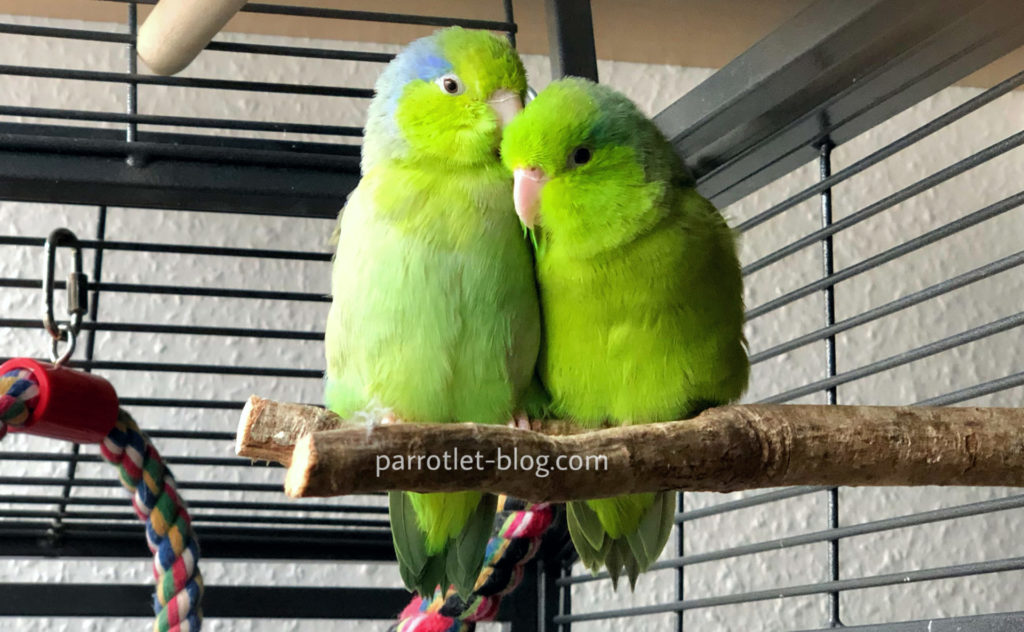
For sleeping, parrotlets use the highest place because they feel safest where they have the best overview. A sleeping house should be without soil, since it could be confound with a nesting box. Oh, and please don’t use plush bird huts for your cage setup because plush particles could damages the crop…
Perches for the Cage Setup
Plastic perches or round wooden perches are mostly included in new cages. Please replace all the plastic stuff and round wooden perches with natural wooden perches of different thicknesses. This is important because perches of the same thickness always load the feet at the same places. This can cause misalignments and ulcers. Perches of different thickness train the feet of the parrotlets automatically. Nice side effect: the bark is at the same time nibbling fun.
*Amazon Affiliate Links – As an Amazon Associate I earn from qualifying purchases.
Parrotlet Bath Bowl
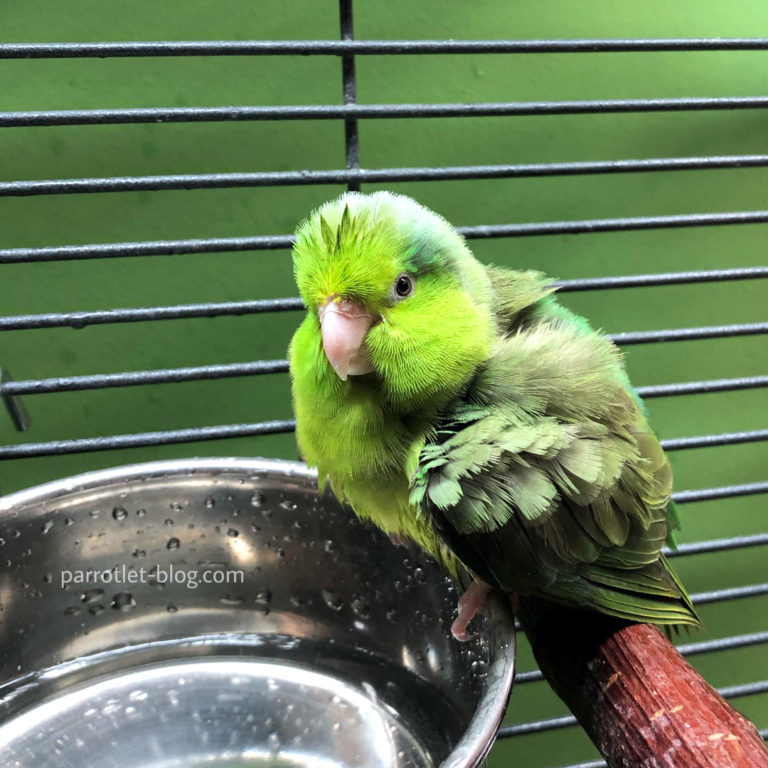
Parrotlets love bathing. Wilma and Freddy take a bath every 2 – 3 days. To make sure that they can take a bath please provide a water bowl that is suitable for parrotlets. Most parrotlets prefer an open bowl instead of an classic bath house. They make no difference between an bath bowl and a drink bowl… For that reason we provide our parrotlets a big stainless steel bowl* for bathing and drinking. We have two water bowls because it is important that each bowl can dry at least 24 hours before it will be used again.
Toys for the Parrotlet Cage Setup
Make sure that the color on wood toys is food coloring, otherwise there is a risk of poisoning. Ropes are not harmless either, as birds can get caught in them and injure or even strangle themselves during an attempt to free them. The constant swallowing of fibres (e.g. sisal) also irritates the crop and can lead to goitre inflammation.
*Amazon Affiliate Links – As an Amazon Associate I earn from qualifying purchases.
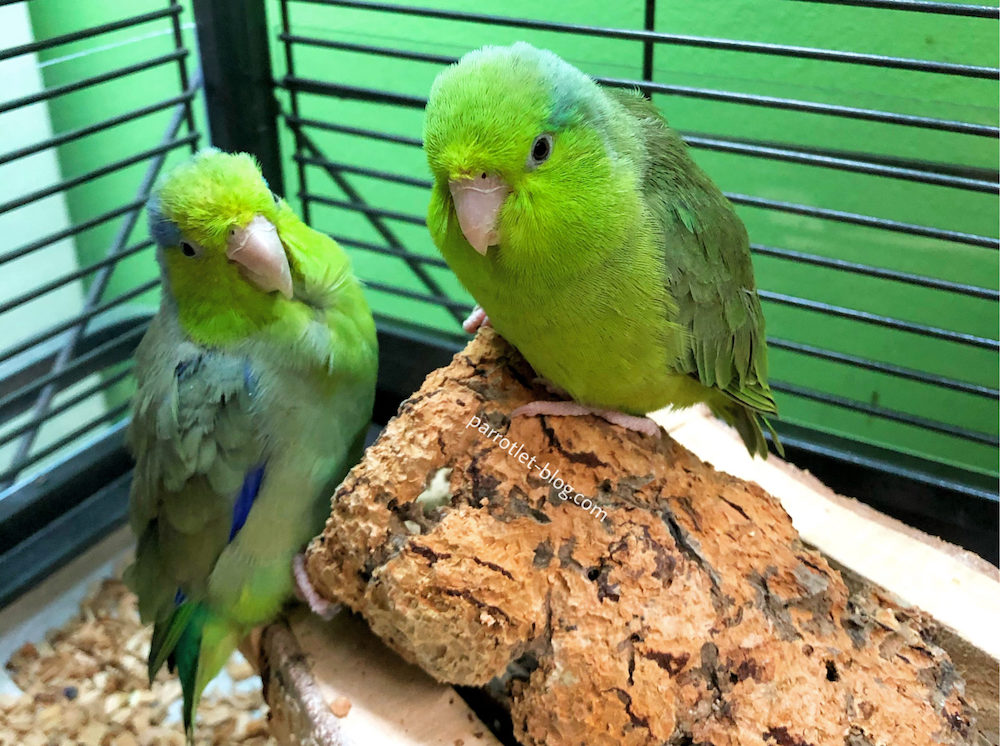
Particularly great for nibbling are cork sticks*, since these have a particularly thick bark and the parrotlets are longer busy. Beside perches also ropes, swings, rings and spirals from rope or wood are suitable.
Parrotlets and of course other birds also love fresh branches which they can shred. As these mostly come from outside, it is very important that you make sure that there is no bird droppings from wild birds on the branches. The branches should also be free from fertilisers and sprays. Before you give the branches from the outside you should carefully brush and rinse them off. You can also put them in the oven (1 hour, 230°F | 110°C).
You can also take a look at the rodent department, as there are often toys that are also suitable for parrotlets. Bridges or seat boards for hamsters are great. You can also find great and fancy toys especially for parrotlets (and other small parrots) at Little Blue Bird Toys.
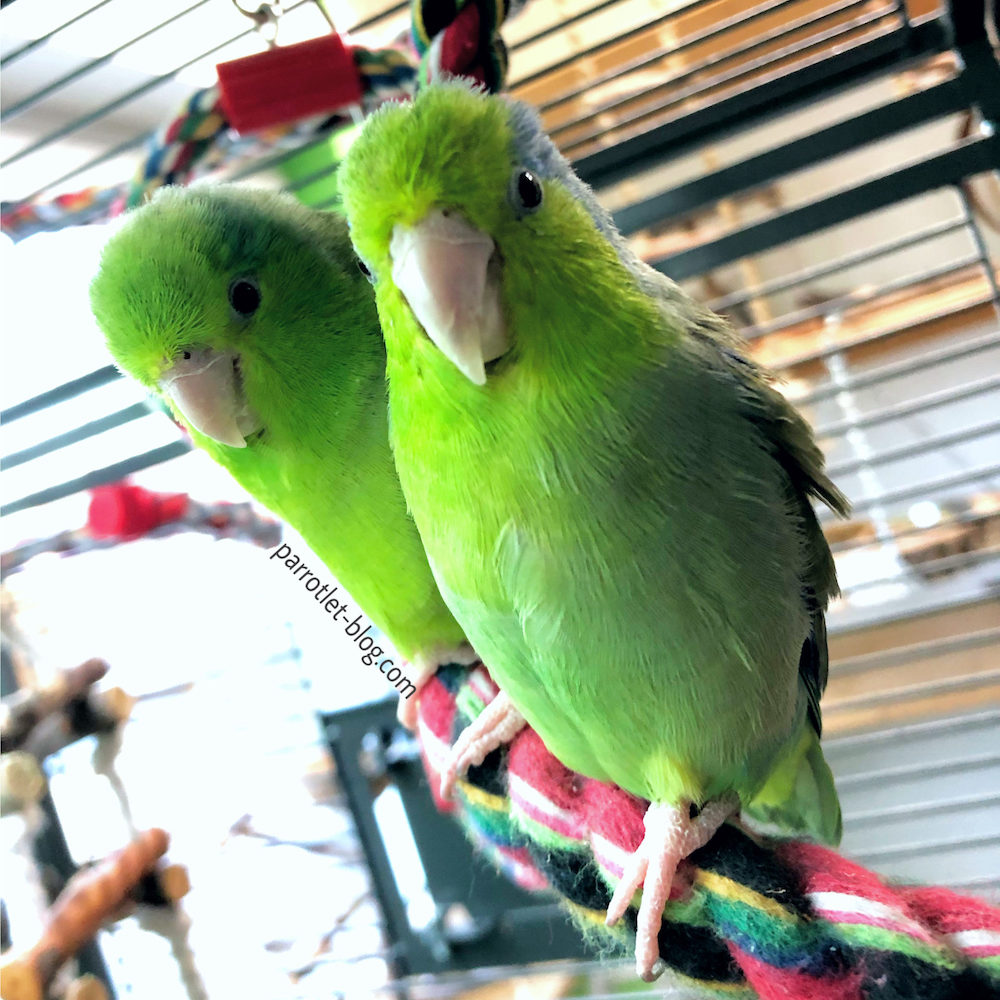
Don’ts of a cage setup for parrotlets
In general parrotlet toys should not contain any small, detachable parts (e.g. the clapper of a bell). That parts could be swallowed by birds.
Please also avoid toys made of plastic as well. Parrotlet beaks are very strong and they can also bite plastic bars. The parrots can hurt themselves at the sharp plastic break edges seriously. For this reason also the parrotlet toy should never be made of plastic!
Important: No plastic birds and no mirrors!
Please remove plastic birds or mirrors. These are regarded as partner replacement und the genuine bird suffers by the strange, not species-appropriate behavior of the wrong bird and/or the mirror image. This leads to behavior disturbances and also crop inflammation since it constantly chokes up feed and tries to feed the alleged partner.
The perches or the cage floor must not be covered with sandpaper, as this material does not wear off the claws, but instead permanently irritates the sensitive feet. The wounds can only heal very badly as a result. With a varied load and sufficient movement, the claws normally rub off all by themselves. In case of excessive claw growth, a bird expert vet should be consulted to clarify the causes.
The cage floor setup
The best choice is to cover the cage bottom is sand, wood shavings from untreated wood, wood granulate or similar suitable material. So please remove the grate between the cage and the tray because parrotlets love to walk on the bedding. It is also easier to change the bedding than to scrub the grate.
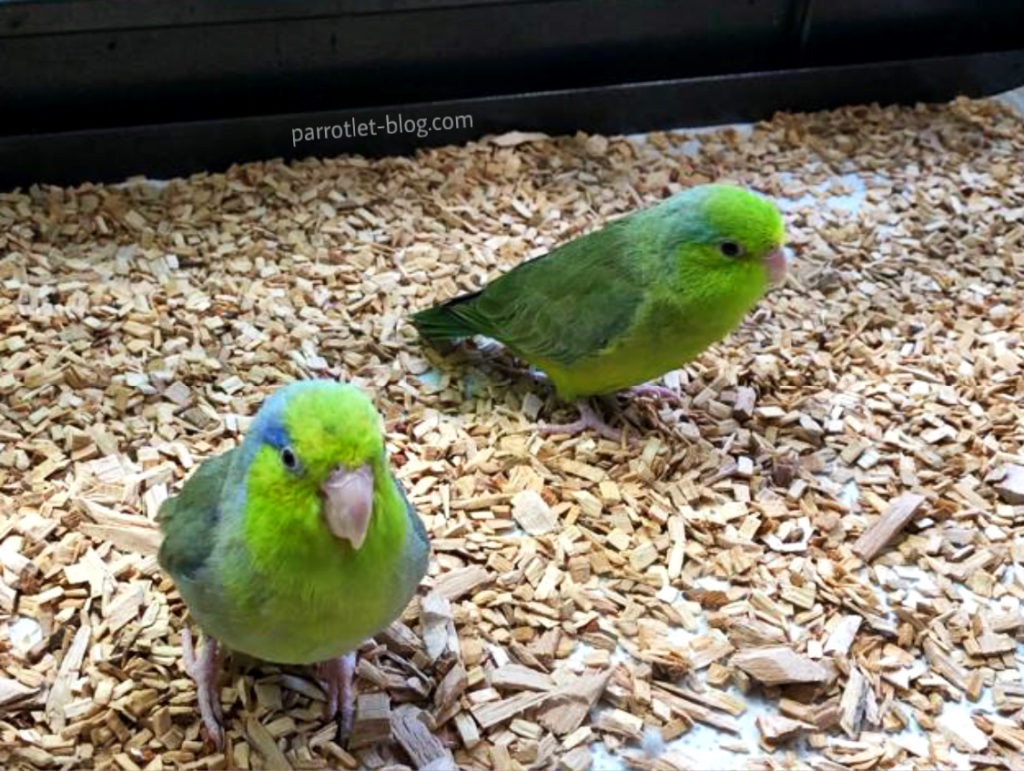
My parrotlets love their beechwood bedding* and spend some time of the day at the cage bottom looking for fallen down seeds 🙂
The bedding should changed at least once a week.
I hope this article helps you to set up a beautiful cage for your parrotlets!
If you like the article feel free to share it with your friends and / or write me a nice comment.
Follow the everyday adventures of my parrotlets on Instagram: parrotlet_blog
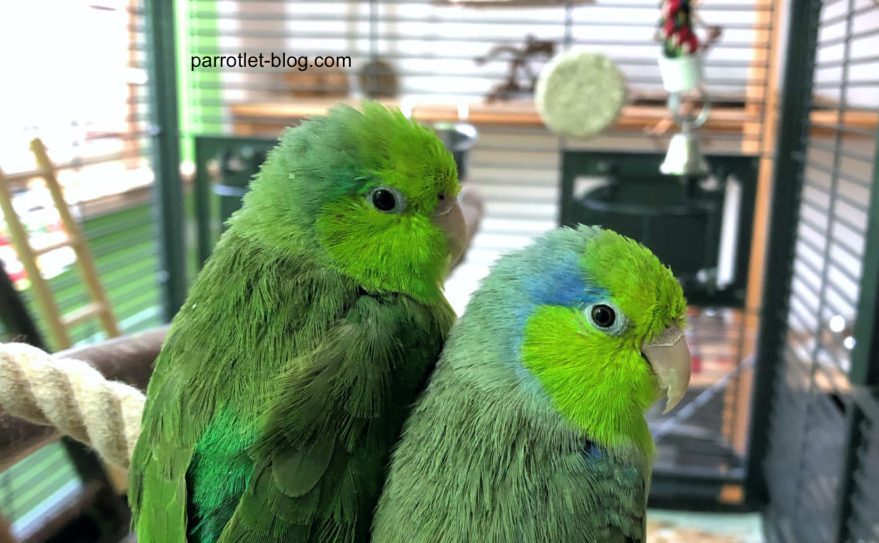









Educating myself as much as possible before getting a parrotlet… This was extremely helpful! Thanks 😊
You’re welcome 🙂
Very helpful thanks
This is so helpful your so amazing!👍 .I love this article it’s filled it’s so much info on how to help my parrotlet!